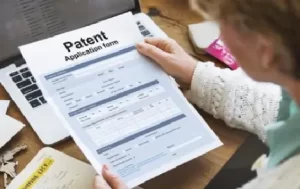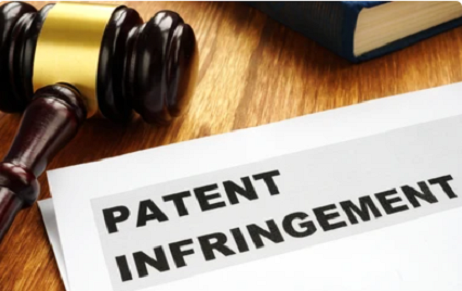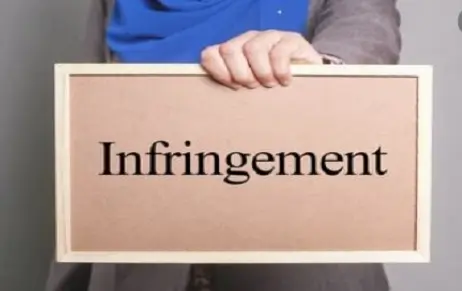Introduction A patent application is a formal form of request pending approval from the authorized…
Fraud In Obtaining Patent And Revocation
A patent (defined in section 2(1) (m)) is a type of intellectual property that gives its owner the legal right to exclude others from making, using or selling an invention for a limited period of time in exchange for disclosure of an invention that meets the criteria of global novelty, non-obviousness and industrial use. During this time, the inventor is entitled to exclude anyone else from commercial exploitation of his invention. Patent law is statutory in nature. However, nowadays we can see that fraud related to intellectual property is increasing at a very alarming rate. Patent infringement is the illegal manufacture or use of the invention or improvement of the invention or subject matter of someone else who owns a government-issued patent without obtaining the owner’s consent, whether by consent, license or waiver. If a patent is fraudulently obtained by another person, the patent owner can prevent that person from misusing it along with charging heavy damages.
[Image Sources : Shutterstock]

Section 25(1) of the Patents Act 1970 clearly provides that a person may oppose the grant of a patent on the ground that the patent applicant or the person under or through whom he claims has wrongfully or fraudulently obtained the patent or any other part thereof or from the person under or through whom the claim is made. The term “improperly obtained” does not necessarily mean that the patent was obtained by fraud. The burden of proof in all these cases is on the side of the respondent. Every interested party can submit objections against the patent to the administrator in the prescribed manner within one year. The board will then examine the patent.
Revocation of Patent:
When a patent is sealed or granted, it is not always the case that the patent should remain unimpeded by any person or third party for the duration of the patent. Some people can challenge a patent for several reasons and the way a patent can be challenged is by revocation of the patent. This means that the granting and sealing of a patent or the decision of the administrator in case of opposition does not guarantee the validity of the patent, which can be challenged for various reasons. Under Section 64, any of the following may apply to the High Court to revoke a patent:
1) Anyone interested
2) Central Govt.
3) A person making a counterclaim in an action for patent infringement
There are various grounds for revocation (Section 64) such as failure to disclose complete specification, does not include any inventive step, wrong attribution or one such ground for revocation is when the patent was obtained wrongfully in violation of the rights of the applicant or through any person who or through which he asserts a clearly given claim according to 64(c).
Reliefs:
In any infringement action, a court may grant interim relief including an injunction and, at the plaintiff’s option, either damages or an accounting of profits. The remedy of damages and the accounting of profit are not cumulative but alternative. Relief is only available for infringements that occur during the term of the patent. No relief applies to acts that occur while the patent is pending in the Patent and Trademark Office. The remedy against continued patent infringement is an injunction.
1) In a patent infringement action, an injunction is issued, which is a court order prohibiting the manufacture, use, or sale of the patented invention. This may include prohibiting further use of articles produced before the patent was granted. Violation of a court order is considered contempt of court and is dealt with in contempt proceedings.
2) The remedy for a past breach is an award of damages. At the discretion of the court, it can be increased up to 3 times. The plaintiff is entitled to damages or an account of profits. The plaintiff must choose any of them. If the plaintiff chooses a remedy on account of profit, he will be entitled to claim only the profit that the defendant obtained by using the plaintiff’s invention. It would be unwise to provide the patentee with profits that were not obtained from the use of his invention.
3) The court may also order that the goods found to be infringing and the materials or patent inventions used to create the infringing goods be seized, forfeited or destroyed as the court thinks fit.
Case laws:
In Bishwanath Prasad Radhe Shyam v. Hindustan Metal Industries, the patented machine is merely an application of an old invention, known decades before 1951, for the traditional purpose of scraping and turning utensils, with a slight change of mode. application, which is no more than a “workshop improvement,” a normal development of an existing method of production not involving anything new beyond the probable ability of the craftsman. The alleged discovery is not off the mark of what was previously unknown. This would be apparent to any skilled worker in the art. There has been no substantial exercise of inventive power or innovative ability. Thus, the SC held that it was obtained wrongfully by disguising the patented device. Therefore, the patent was revoked.
In Ranbaxy Australia Pty Ltd v Warner-Lambert Co LLC the court invalidated a patent granted to Warner-Lambert’s cholesterol-lowering drug, Lipitor, Warner-Lambert found that the activity of the R form of the drug was about ten times that of the racemate. However, it was found that was only about twice as large as the racemate. The court found that the statement that the R form of the drug was ten times larger was material to the patent office’s considerations in granting the patent and was false and misleading. The patent was therefore revoked.
In the District Court of Delaware case of Cancer Research Technology et al. in Barr Laboratories et al. Cancer Research Technology (CRT) has filed a number of patent applications involving the tetrazine compounds of temozolomide under the trade name Temodar®. However, these applications were rejected by the USPTO. However, in the challenged patent, the applicant demonstrated that there was no need to provide data demonstrating efficacy in humans, as the animal test data already included in the application were sufficient. This patent was allowed by the examiner. However, the defendant was able to produce documents in which one of the inventors had published papers on tetrazine derivatives, including documents showing that some of the claimed compounds were inactive. The court found that this information was not shared with the patent office when broad claims including inactive compounds were granted. The court held that the data showing inactivity was essential to patentability and declared the patent unenforceable due to invalid broad claims. These cases highlight the importance of inventors and applicants providing all relevant data to their patent attorneys for the purpose of preparing the patent specification as well as while their patent applications are pending. Consideration should be given to communicating any new data, prior art, or other matters to the relevant patent authorities that are material to the patentability of the invention or that conflict with prior statements or information contained in the specification.
In the case of Monsanto Company v. Coramandal Indag Products (p) Ltd. The SC ruled that CP53619 herbicide was public knowledge before the patent was granted. The public was already informed about its composition and use by the report of the International Rice Research Institute in 1968. The court further ruled that the active ingredients, solvent and emulsifiers were known; the process was known, the product was known. Plaintiffs merely disguised a substance known to have been discovered and fraudulently sought to include it in their patent specification. The patent could therefore be revoked.
Conclusion:
There is an old saying, “If you don’t protect your idea, someone else will.” Patent fraud not only hurts the regards of the patentee but also de incentivizes him/her from doing any further inventions. The infringement of a patent is a problematic aspect of the Indian legal system. It is apparent to say that the law always works for the betterment of the people, if we talk about the Patent Act, it is to ensure the welfare of the general public, the law has provided a salient right to the people and the Central Government to raise a voice against a patent which they feel is inappropriate and harmful to the public interest. We should care about the issuance of patents on fraudulent, imaginary and non-existent inventions, and urge the government to enact reforms to the patent system that will more closely tie patents to inventions that are real. So according to the present situation of increasing cases of patent fraud we can say that being proactive is the best way to protect your brand from stealing what you’ve worked hard on.
Author: Jatin Chaddha, a student of Vivekananda Institute Of Professional Studies, in case of any queries please contact/write back to us via email [email protected] or at IIPRD.


